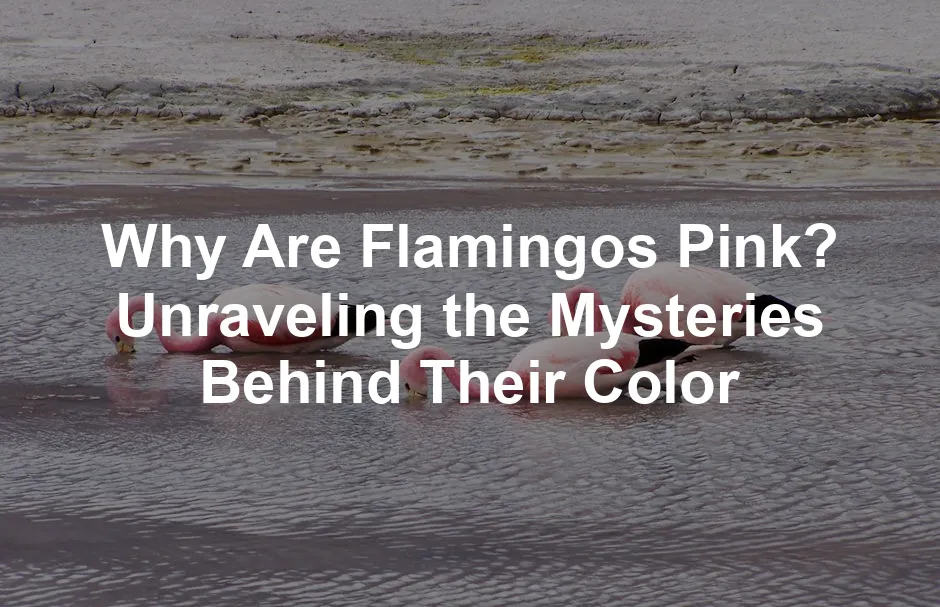
Why Are Flamingos Pink? Unraveling the Mysteries Behind Their Color
Introduction
In the vibrant world of nature, few creatures are as captivating as the flamboyant flamingo. With their striking pink feathers and elegant stature, these wading birds are often a topic of curiosity. But why are flamingos pink? Surprisingly, the answer isn’t as straightforward as one might think.
While they strut around wetlands looking like they just stepped off a fashion runway, flamingos don’t start their lives in pink. Instead, they hatch with dull gray feathers. Yes, they’re the original “gray is the new pink” trendsetters!
The transformation from gray to pink is not a mere genetic fluke; it’s all about what they chow down on. Flamingos feast on a diet rich in carotenoids, those colorful pigments found in algae, brine shrimp, and other tasty morsels.
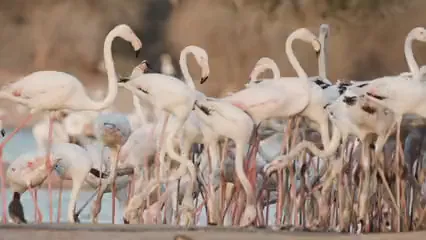
But why not give your own health a little boost while you’re at it? Consider adding a Carotenoids Supplement to your diet, too! It’s like giving your body a colorful upgrade, just like flamingos get from their meals!
These pigments pack a powerful punch. As flamingos munch on their meals, enzymes in their digestive systems break down carotenoids. The liver then absorbs these pigments, which are later deposited into feathers and skin. The result? A stunning array of pink hues that make them the supermodels of the bird world.
But wait, there’s more! Flamingo coloration isn’t just about looking fabulous. Color intensity varies among flamingo species, influenced by their habitat and diet. Some flamingos flaunt a vibrant reddish-pink, while others might sport a more subdued shade.
Interestingly, flamingos can even lose their brilliant color during the breeding season. As they focus on feeding their chicks, their diets may lack sufficient carotenoids, leading to a temporary fade in their iconic pink.
Join us on a colorful journey to uncover the science behind their unique hue, the role of their diet, and the fascinating variations among species. Who knew being pink could be so complicated? Stay tuned for more flamingo fun!
The Science of Flamingo Coloration
How Diet Affects Color
Flamingos are like the fashionistas of the bird world, strutting around in their eye-catching pink plumage. But what makes these birds so vibrant? The secret lies in their diet, specifically in the pigments known as carotenoids.
Carotenoids Explained
Carotenoids are organic pigments found in many plants and algae. They come in various colors, including red, orange, and yellow. Flamingos get their carotenoids primarily from their favorite foods, such as blue-green algae, brine shrimp, and brine fly larvae. These tasty snacks contain high levels of beta-carotene, a specific type of carotenoid that gives flamingos their signature hue. So, every time a flamingo enjoys a meal, it’s basically a colorful buffet for its feathers!
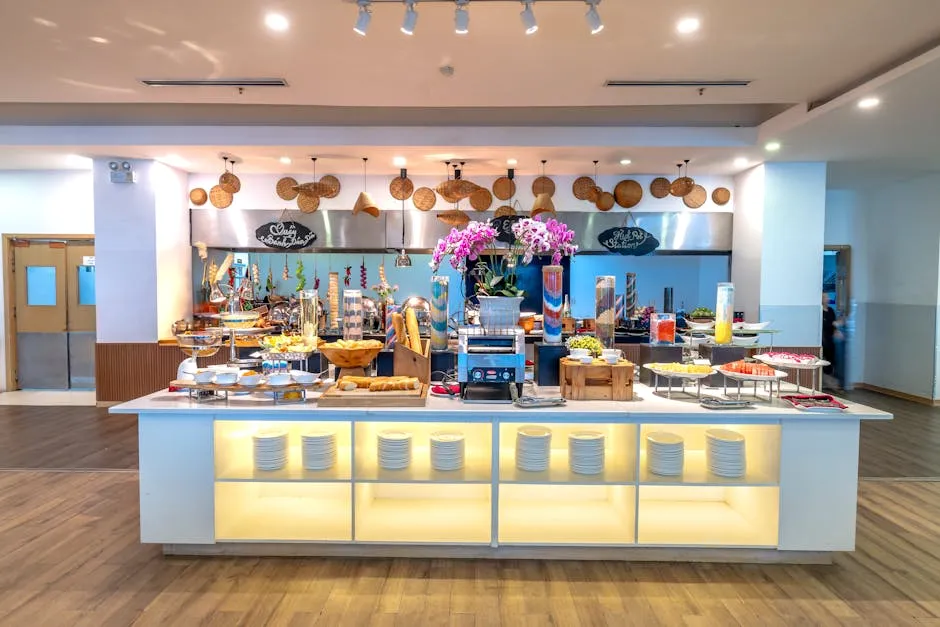
If you’re feeling crafty, why not channel your inner flamingo with a Flamingo Coloring Book? It’s a fun way to relax while adding a splash of color to your life, just like those fabulous birds!
Dietary Influence
Once flamingos consume carotenoid-rich foods, their bodies spring into action. Enzymes in their digestive systems break down these pigments, allowing the flamingos to absorb them through their liver. It’s like a colorful transformation from the inside out! The liver processes these pigments, which are then transported via fat to different parts of the body. When flamingos finally deposit these pigments in their feathers and skin, voilà! The once-gray chicks start to flaunt their stunning pink plumage.
Color Absorption
The liver isn’t working alone in this vibrant transformation. Fat plays a crucial role, too! It acts as a carrier, helping store and transport the pigments to the feathers. Over time, the accumulation of these carotenoids leads to an impressive color display. Flamingos with a diet rich in carotenoids will boast bright pink or even reddish feathers. However, if their diet lacks enough carotenoids, their color may not be as vibrant. In fact, during breeding season, when flamingos focus on feeding their chicks, their diets may change, causing them to fade back to a paler shade. Talk about a fashion faux pas!
The Role of Environment
Color isn’t just a result of diet; the environment plays a significant role too. Flamingos inhabit various ecosystems, and the conditions of these habitats can greatly influence their coloration.
Habitat Variations
Flamingos thrive in shallow saltwater or brackish environments, often found in mudflats, estuaries, and lagoons. The type of algae and organisms present in these habitats impacts the carotenoid levels available to flamingos. For instance, flamingos in areas with abundant blue-green algae might develop a more vibrant pink compared to those living in regions with limited food sources. It’s a colorful buffet that varies from one locale to another!
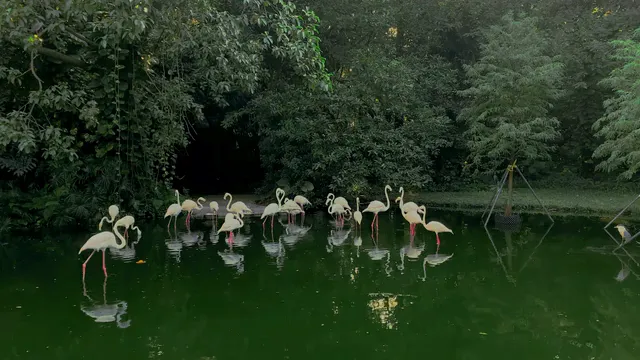
If you want to bring some of that tropical vibe into your home, consider adorning your walls with some stunning Flamingo Wall Art. It’s the perfect way to add some pizzazz to your space while celebrating these fabulous birds!
Species Differences
There are six flamingo species, each with unique characteristics and colorations. The Caribbean flamingo is often the most vibrant, displaying a bright reddish-pink hue. Lesser flamingos, on the other hand, may appear paler due to their diet consisting primarily of algae with lower carotenoid concentrations. Species like the Greater flamingo, which inhabit a variety of regions, can show color variations based on local food availability. So, whether you’re admiring a flamboyant Caribbean flamingo or a more subtle Lesser flamingo, you’re witnessing nature’s palette at work!
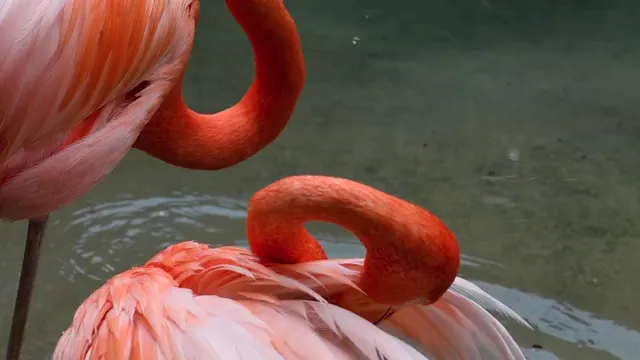
In summary, flamingos owe their dazzling colors to a mix of diet and environment. Carotenoids from their food work their magic, while habitat variations influence the intensity and shade of their feathers. It’s a beautiful blend of biology and ecology, making flamingos not just pink but downright fascinating!
Flamingo Life Cycle
Flamingo chicks are born as fluffy gray bundles, resembling tiny clouds. They hatch from eggs that parents carefully incubate in mud nests. Once out in the world, these chicks undergo several intriguing growth stages.
In their first few weeks, they rely heavily on their parents for nourishment. Flamingo parents produce a special liquid called crop milk, rich in nutrients. This milk is a bright pink, thanks to the carotenoids consumed by the adults. It’s like gourmet baby food, providing essential proteins and fats that help chicks grow strong.
As they mature, flamingos develop their long legs and distinctive curved bills. These features are crucial for their unique feeding habits. It takes about three years for chicks to transition into their full pink glory. During this time, they learn how to forage and filter-feed, utilizing their specialized bills.
Speaking of feeding, if you’re looking to attract more birds to your backyard, consider a Bird Feeding Station. It’s a great way to enjoy birdwatching right from your home while giving a nod to our feathered friends!
The Timeframe of Color Change
Flamingos don’t just wake up one day looking fabulous. The transformation from gray to pink is a process that unfolds over time. Typically, this change begins around six months of age. As chicks consume more carotenoid-rich foods like brine shrimp and algae, their feathers gradually shift in color.
The timeline can vary based on diet and environment. Flamingos with a diet rich in carotenoids will experience a quicker transformation. Those feeding on less nutrient-dense food may take longer. Additionally, habitat influences this color change. For example, flamingos in areas abundant with carotenoids will flaunt brighter colors compared to their peers in less nutrient-rich waters.
Ultimately, the vibrant pink color serves a dual purpose: it reflects the flamingo’s dietary habits and plays a crucial role in attracting mates. A flamingo’s color is a badge of health, showcasing its ability to thrive in its habitat.
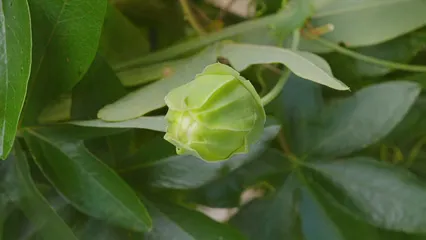
Courtship Rituals
Flamingos are not just pink fashionistas; they are also incredible dancers! Courtship rituals among flamingos involve elaborate dances that are as choreographed as a Broadway show. These courtship dances often start with synchronized movements, where flamingos stretch their necks and flap their wings. Imagine a bunch of birds trying to impress each other with their best moves!
These social behaviors are crucial. They help flamingos establish bonds and choose mates. The more synchronized the dance, the more appealing the dancing flamingo appears. It’s like a bird version of a talent show!
But it doesn’t stop there. Group dynamics play a significant role too. Flamingos often perform their rituals in large groups. This collective display amplifies the spectacle, making their dances even more mesmerizing. The sight of dozens of flamingos dancing together is a sight to behold. It’s not just about individual attraction; it’s about community and connection.
These collective behaviors are vital for maintaining social bonds within the flock. Strong social ties lead to better cooperation in raising chicks and foraging for food. So, the next time you see a flamboyant flamingo strutting its stuff, remember: it’s not just about the pink feathers. It’s about love, social connection, and a splash of avian flair!
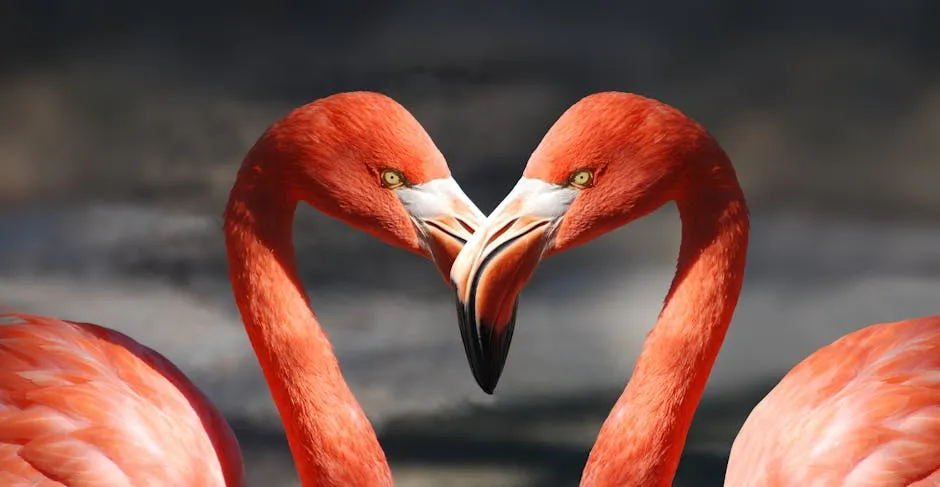
Interesting Flamingo Facts
Flamingos are fascinating creatures with plenty of quirks that set them apart from the avian crowd. Let’s dive into some interesting flamingo facts that will tickle your curiosity and maybe even make you chuckle!
Unique Behaviors
Flamingos have some truly unique feeding techniques. They are filter feeders, which means they eat with their heads upside down! Picture this: a flamingo plunging its head into the water, using its specialized bill to strain out tiny organisms. It’s like they’re doing a handstand while snacking. This technique allows them to scoop up algae, brine shrimp, and other goodies in shallow waters.
Their bill is specially designed with comb-like plates that trap food while letting water flow out. Talk about multitasking! This filter-feeding method is their secret to a carotenoid-rich diet, which contributes to their fabulous pink color.
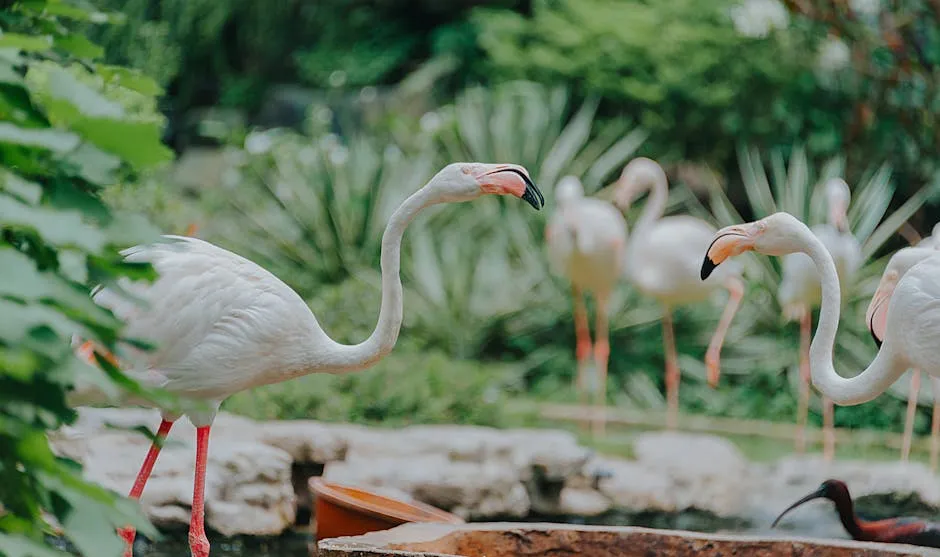
Flamingo Social Structure
Did you know that there are fun collective nouns for flamingos? A group of flamingos is called a “flamboyance.” Yes, they are as fabulous as they sound! Other terms include “stand,” “colony,” or “pat.” Whatever you call them, it’s clear that flamingos know how to make an entrance.
Communication is key for these social birds. Flamingos interact using vocalizations and body language. They make a range of sounds, from grunts to honks, to maintain their social bonds. Strong relationships within the flock ensure that everyone is on the same page when it comes to foraging and raising their young. It’s all about teamwork in the flamingo world!
So, the next time you see flamingos together, remember: they are not just striking a pose. They’re engaging in a colorful social dance that showcases both their unique behaviors and the bonds that tie them together. Who knew flamingos could be so entertaining?
Conclusion
In summary, the pink coloration of flamingos is a remarkable example of how diet and environment shape the natural world. From their humble gray beginnings to their vibrant adult plumage, flamingos showcase the intricacies of ecological adaptation and evolutionary biology.
Their striking appearance not only serves as a testament to their unique diet but also plays a crucial role in their social interactions and mating rituals. Flamingos get their fabulous pink hue from carotenoids, which they obtain from consuming algae, brine shrimp, and small crustaceans. The more they eat, the pinker they become!
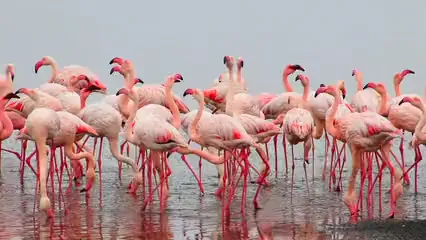
This transformation highlights the delicate balance between food sources and the flamingo’s physical traits. Their color intensity can vary significantly among species and habitats. For instance, Caribbean flamingos are often a deep red, while Lesser flamingos might sport a paler pink, depending on their local diets.
Speaking of local diets, why not try your hand at making some delicious Carotenoid-rich Food Cookbook? It’s a great way to incorporate more healthy pigments into your meals while enjoying the benefits of carotenoids!
Moreover, the vibrant feathers are not just for show. During mating season, brighter colors signal health and vitality, attracting potential partners. So, when you see a flamboyant flamingo, you’re looking at a living billboard of their diet and well-being!
As we continue to study these magnificent birds, we gain insights not only into their lives but also into the broader relationships within ecosystems. Understanding why flamingos are pink gives us a glimpse into the interconnectedness of wildlife, diet, and environment.
Next time you spot a flamingo, take a moment to admire not just its beauty but also the fascinating science behind its stunning appearance. These birds are truly a colorful marvel of nature!
Are all flamingos pink?
Not all flamingos are pink! Color variations depend on species and region. For instance, the Caribbean flamingo boasts a vibrant reddish-pink hue, while lesser flamingos appear more subdued due to a different diet. The environment and available food sources also influence their coloration.
Can flamingos change color?
Yes, flamingos can change color! Their diet directly impacts their hue. If they consume fewer carotenoids, they may fade to a paler shade. This color loss often occurs during breeding season when they focus on feeding their chicks, leading to a temporary washout of their bright pink.
Why are flamingo chicks gray?
Flamingo chicks are born gray for a reason! Initially, they lack the carotenoids needed for vibrant coloring. As they grow and begin eating a diet rich in these pigments, their feathers gradually turn pink. This transformation takes a few years as they mature.
What do flamingos eat?
Flamingos thrive on a diet rich in carotenoids. They primarily consume blue-green algae, brine fly larvae, and brine shrimp. These foods are critical for their health and coloration, providing essential nutrients that help them maintain their stunning appearance.
Do flamingos migrate?
Yes, flamingos do migrate! They often travel to find better feeding grounds or suitable breeding sites. These migratory patterns can vary among species, but many flamingos will journey long distances, demonstrating their adaptability and resourcefulness in seeking out rich habitats.
Please let us know what you think about our content by leaving a comment down below!
Thank you for reading till here 🙂
All images from Pexels




